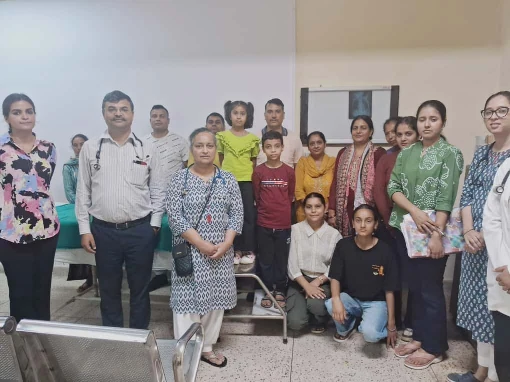Amidst Amateurs, Seeds of Future Theater Stars Shine at Him Youth Color Festival
3 min read
Shimla, Dec 31 Ritanjali Hastir
Under the vibrant umbrella of the Him Youth Color Festival, students from various colleges took center stage at Gate Theatre today, presenting a diverse array of captivating plays. The female students of Rajkiya Kanya Mahavidyalaya Shimla mesmerized the audience with their rendition of “Mukaddar Ka Sikandar,” while the talented students from Rajkiya Mahavidyalaya Mandi showcased “Charumitra.” Adding to the theatrical extravaganza, students from Rajkiya College Karsog presented “Fallen Angels,” and the students from Rajkiya Degree College Seema Rohru left a lasting impression with their splendid performance of “Hamlet.”
“Mukaddar Ka Sikandar,” unfolds with a prophecy foretelling Alexander’s doom in India. Chanakya, aiming to fulfill the prophecy, plots a deceptive encounter with Porus. However, Porus, displaying nobility, rejects treachery. The play intensifies with major battlefield events, culminating in Porus’ defeat. The narrative concludes with the tragic death of Alexander, portraying the inevitable consequences of ambition and the unyielding nature of destiny. The play tried to encapsulate the dramatic journey of power, deception, and destiny. The play had scope for improvement in areas like the Oracle, the portrayal of the Chanakya character, and too much use of smoke. The narrator’s appearance as a witch could not add value to the play, but on a college level, it did work as eye candy.
The second play, “Charumitra,” a play penned by Hindi poet Ram Kumar Verma, unfolds around the fictional character Charumitra, who serves as a maid to Tishyaraksha, the last wife of Mauryan Emperor Ashoka. The play delves into Charumitra’s unwavering loyalty and sacrificial nature. The actor playing Ashoka was brilliant in his performance. The voice modulation with each emotion was visible. The team was able to create an overall impact.
The third play, “Fallen Angels,” is based on John Milton’s Paradise Lost, a retelling of Adam and Eve’s story from the biblical book of Genesis, which describes the creation of heaven and earth and of Adam and Eve. This poem fleshes out this story and imagines the couple’s reactions to the events that led to their being expelled from the Garden of Eden. As powerful as the story sounds, the visuals were not as impactful.
Finally, the last play, “Hamlet,” based on William Shakespeare’s play; unfolds the intricate plot of Prince Hamlet seeking revenge against his uncle, Claudius. Claudius, driven by ambition, murders Hamlet’s father to ascend to the throne and marries Hamlet’s mother. Hamlet grapples with the weight of this betrayal and embarks on a quest for retribution. The narrative intricately weaves themes of vengeance, betrayal, and the complexities of familial relationships. As Hamlet navigates a world of political intrigue and moral dilemmas, the play delves into the psychological turmoil of its central characters. Being the most powerful and influential tragedy in English literature, a lot was expected, and trimming down the play to 30 minutes was a herculean task. The set could have been designed better, as a lot of action was blocked by them. The use of a throne inspired by “Game of Thrones,” which had a different symbolic meaning for the swords, was smart but not apt. While ambitious, some directorial choices hindered the overall impact.
The day was full of promise and high expectations, going by the magnitude of the scripts involved. Students showed their full dedication when it came to performances. However, this time the directors let down the main scripts as they failed to encapsulate the essence of these scripts.
The recently concluded Him Youth Color Festival not only brought forth a vibrant display of amateur theatrical productions but also introduced promising talents that could shape the future of Himachal’s theater. These budding artists showcased commendable performances, proving that, even in amateur productions, their dedication and skill surpassed many so-called professional productions. This positive note highlights the potential of these emerging talents, deserving appreciation for their remarkable contributions to the local theater scene.





